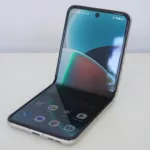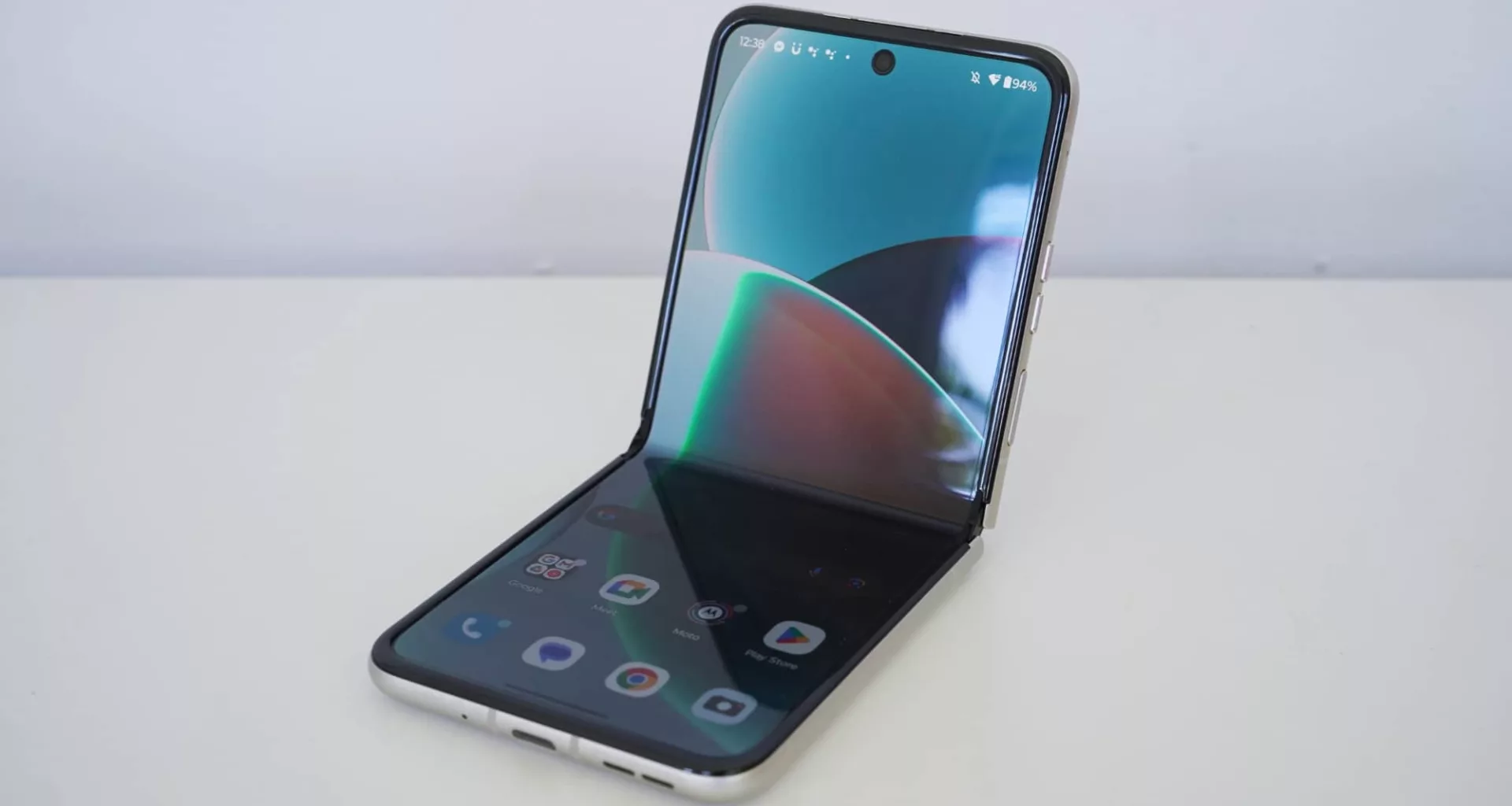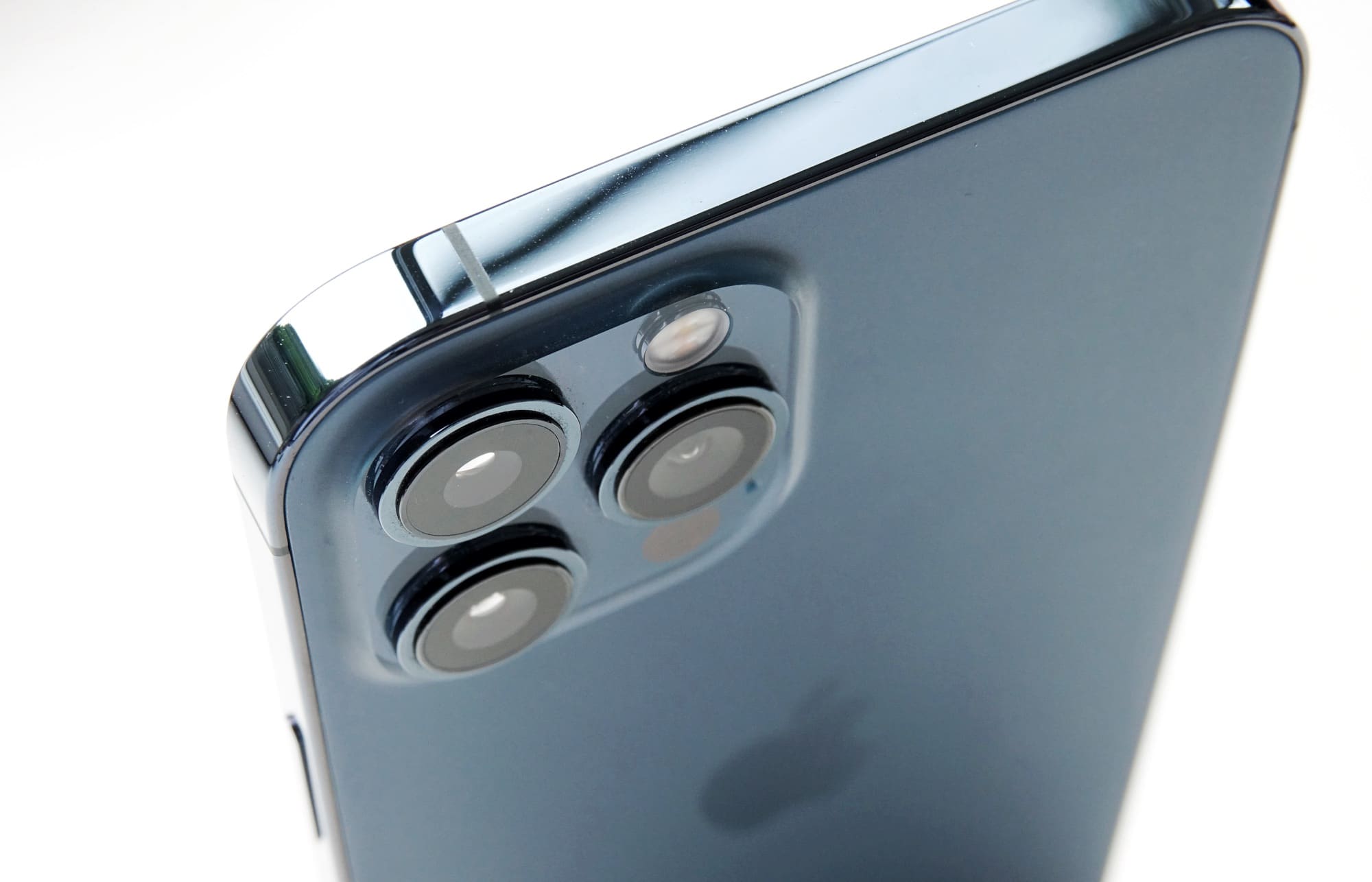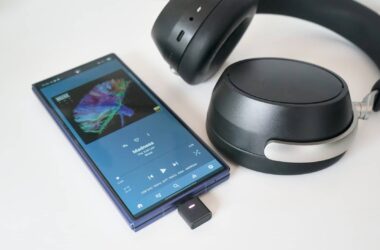Quick review
The good
The not-so-good
Foldable phone technology is still so new that it tends to command a hefty price increase on the competition, but what if it doesn’t? In the Moto Razr 40, there’s a foldable with a wallet-friendly price.
Near the end of 2023, it’s pretty safe to say the Android phone releases in Australia have been a touch underwhelming. There are mainly four mobile makers delivering hardware locally in the fight against Apple, with Google, Samsung, Oppo, and Motorola, and that is roughly it.
There has been a reasonable number of phones this year, but the exciting phones tend to have been in the mid-range space, including Google’s Pixel 7a, which delivers surprisingly solid value and bang for your buck.
We’ve also seen a few foldable, as this technology takes off in a big way. You can do more with foldable screens, packing in a tablet to go or a big screen in a compact spot, but they still come with a pretty noticeable caveat: price.
Foldable phones are not cheap. Not at all. And yet there may be some hope on the horizon, as Motorola builds a less expensive foldable in the Razr 40.
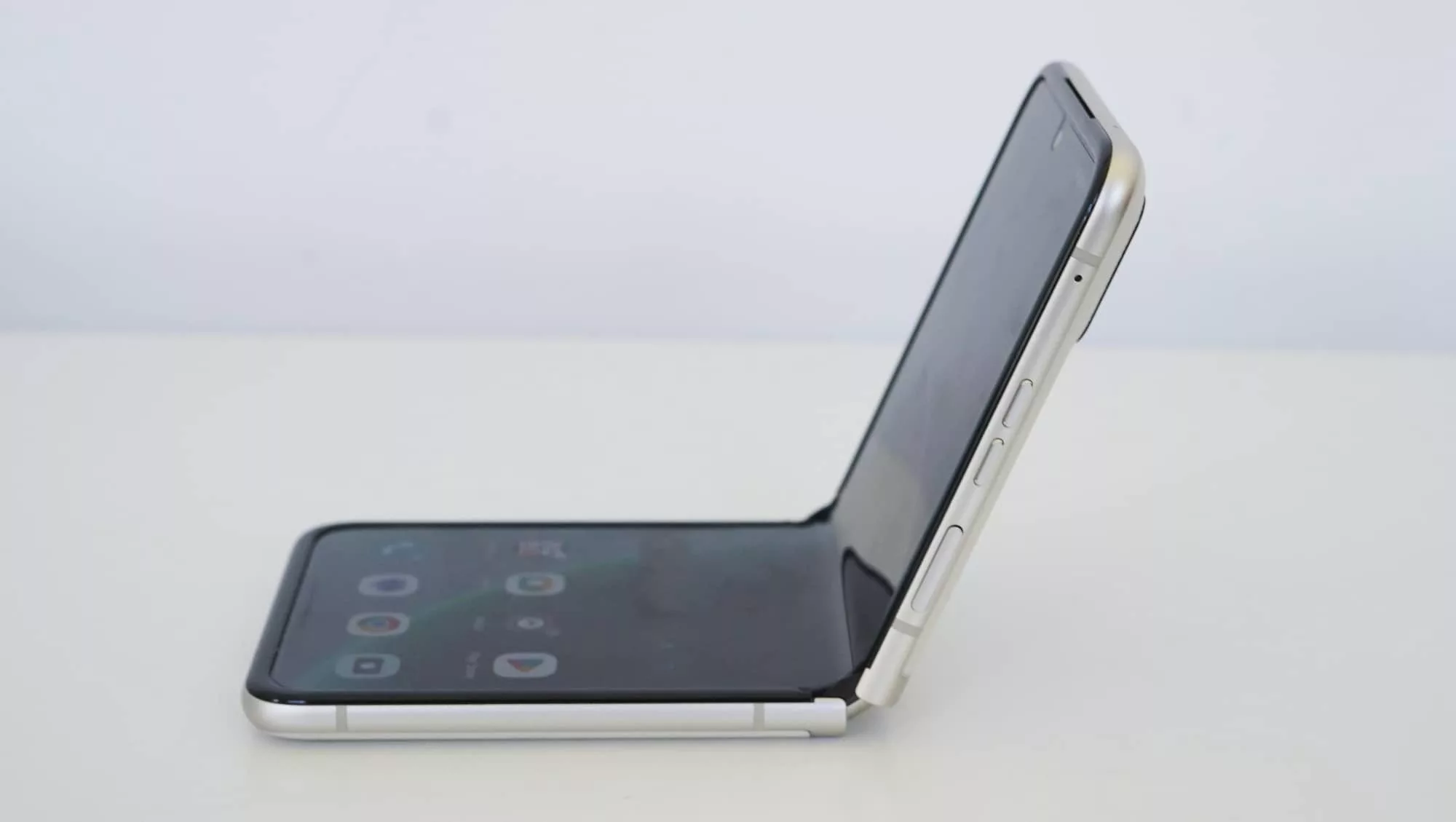
Design
Taking a page from a previous Motorola flip phone, the Razr 40 looks a little like the reinvented Razr we saw at the beginning of this year, except with some minor changes to the aesthetics that make it stand out.
A leather-looking finish is the most obvious, giving the phone a more refined look than you may expect, especially given the less exy price tag.
Features
Inside, the Razr 40 will feel like a familiar phone if you’ve read any of our previous Motorola Razr reviews from the past year or so.
Technically, Motorola has offered three Razr phones in that time, but only one of those truly changed the formula. Believe it or not, that’s not this phone. If you want the model that evolves things, look to the Razr 40 Ultra with its big front-facing screen and use of Android at the front. It’s like having two phones in one: one big, one small.
The Razr 40 is not that phone, but it is very much like the first Razr from the beginning of the year (which was also the 2022 Razr), delivering a small screen on the outside and a big screen on the inside.
The specs for the Razr 40 include a Qualcomm Snapdragon 7 Gen 1 chip, 8GB RAM, 256GB storage, Bluetooth, WiFi, 5G, and two cameras covering a 64 megapixel wide that usually captures at 16 megapixels, alongside a 13 megapixel ultra-wide, while the inside sports a third selfie camera for 32 megapixel images and 4K videos.
It all comes in a design that looks like the more premium Razr model, but yet isn’t. The price will set that apart, as will the clearly different spec sheet.
| Model | Motorola Razr 40 (XT2323-1) |
| Chip | Qualcomm Snapdragon 7 Gen 1 |
| RAM/Storage | 8GB RAM; 256GB storage |
| OS | Google Android 13 |
| Connections | 5G (sub-6), WiFi 6E, Bluetooth 5.3, GPS, NFC, USB-C |
| Battery | 4200mAh |
| Size/Weight | 7.35mm open, 15.8mm closed; 188g |
| Price | Starting from $999 AUD |
In-use
Even though this is clearly not the same phone as the more expensive Razr, you’ll use it more or less exactly the same.
There’s a small 1.5 inch OLED screen for notifications and such on the outside that you can swipe to play with, plus a bigger 6.9 inch pOLED screen on the inside revealing Android 13 and all it has to work with.
That screen runs at Full HD+ with 2640×1080, making it taller than you might think — and certainly taller than some apps will like, giving you space at the bottom! — plus the 144Hz maximum refresh rate means the display is smooth for animations, too.
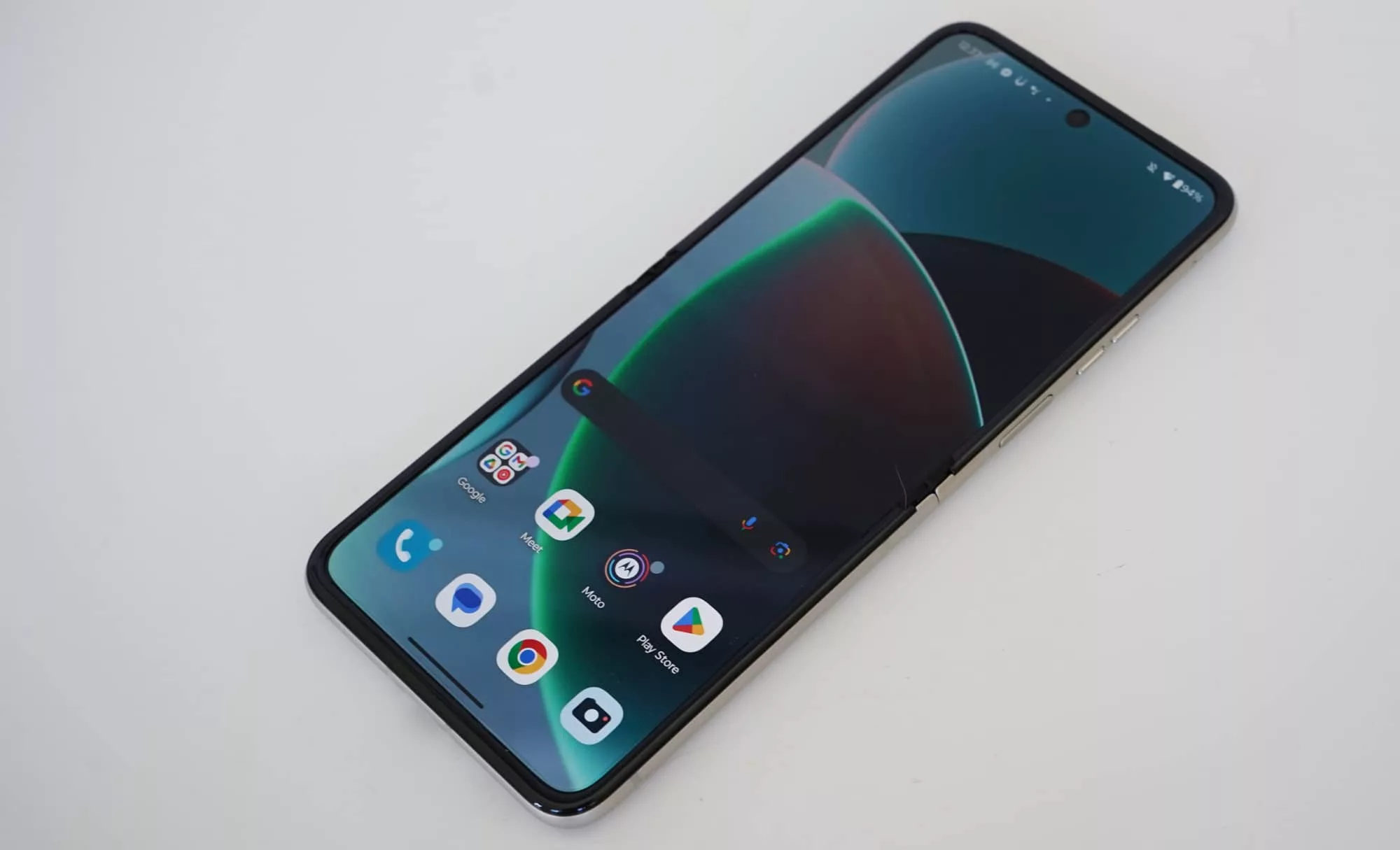
Swipe for gestures just like any other modern Android phone, play with the widgetised home screen, and in general just use your phone, with a fingerprint sensor under the power button on the right edge or a facial unlock using the cameras. It’s all about standard.
Motorola’s extra tweaks are also along for the ride, such as how you can twist your wrist to launch the camera, one of our favourite additions by Moto in the past few years.
Performance
With a slightly different chip inside than the 40 Ultra, you can expect a slight change to performance, and that’s more evident in the benchmarks than anywhere else.
Real-world use is a different story altogether. Like any phone, you may spot the odd momentary delay and bit of lag from time to time, and we suspect the max 8GB RAM isn’t helping the Snapdragon 7 as much as we’d hoped.
Your time with the Razr 40 will differ, and for the most part Qualcomm’s Snapdragon 7 Gen 1 handles itself well, but just be aware that the delivery of performance isn’t quite where the more premium “Ultra” model is. The performance isn’t even where other Razr models have been, and is slower than last year’s Galaxy Z Flip 4.
It’s a similar name, but not quite the same, even if the point of the device is more or less identical.
And that point is total portability, snapping a lot of tech into a compact size you can easily throw into a pocket, and Motorola has clearly delivered that, even if it comes with the odd bump of lag.
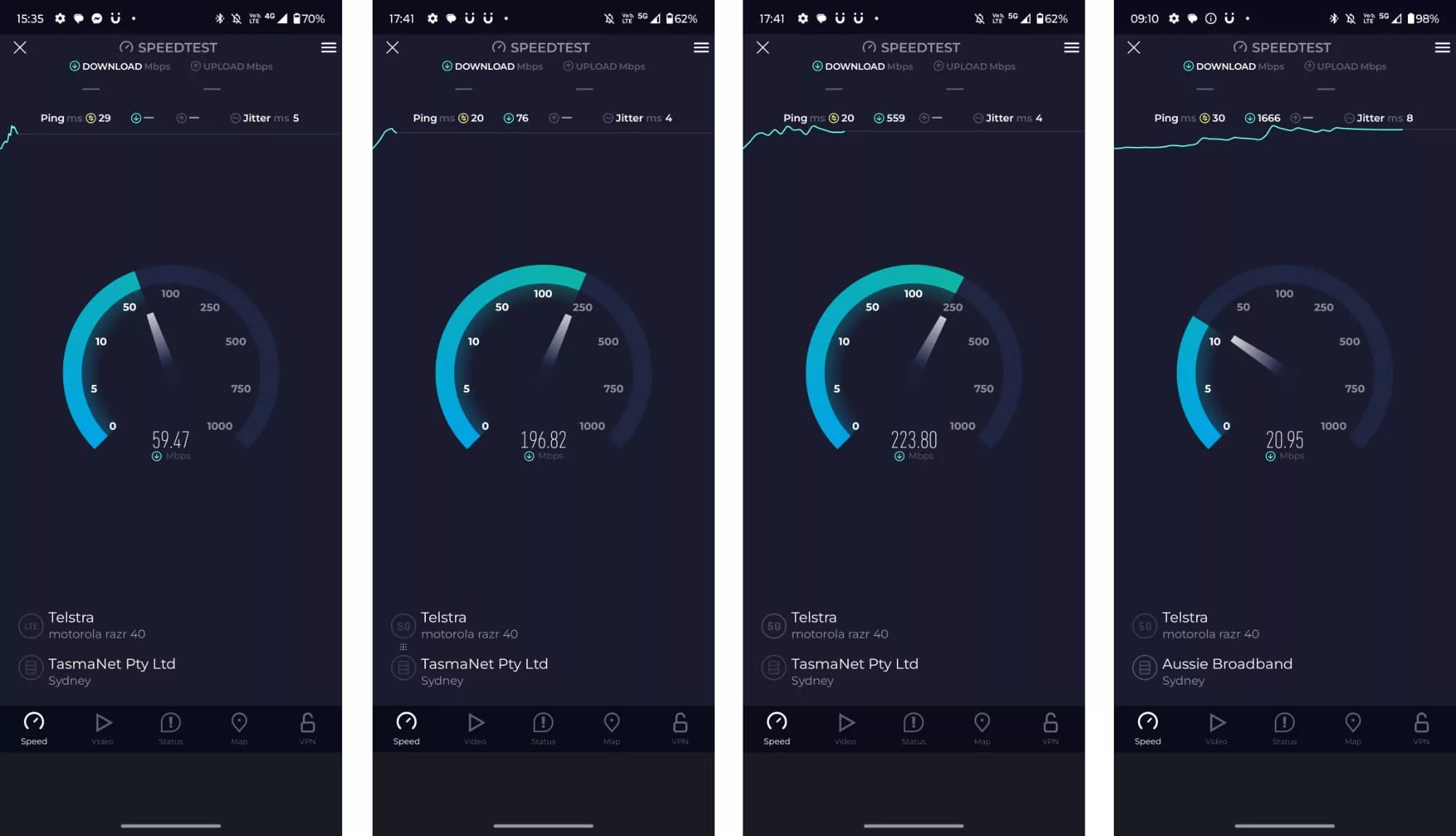
You should experience relatively solid 5G performance, though that will depend on your telco, location, and other factors at the time, of course.
Testing the Razr 40 on the Telstra network in Sydney by way of Mate, we found speeds as high as 297 before Mate’s speed limiter kicked in. Telcos and speeds vary, but that’s a great outcome for a phone these days.
Camera
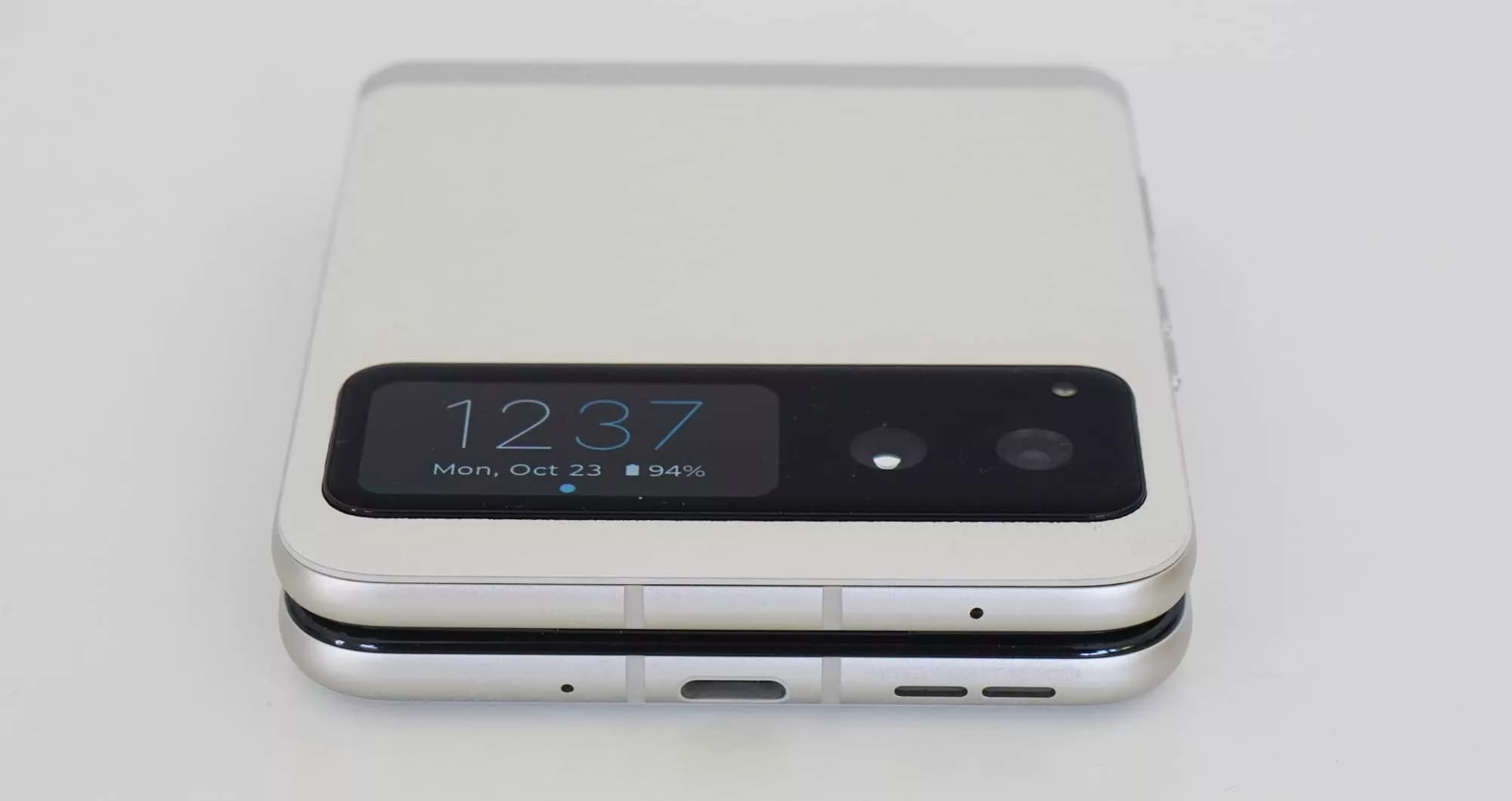
There are also two cameras on this phone, and they deliver acceptable images for the price range, jumping between a standard 64 megapixel wide that primarily captures at 16 megapixels, and an ultra-wide capturing 13 megapixels.
That’s about par for the course for foldable flip phones, which outside of a recent launch by Oppo that may not even come to Australia, generally sees the same configuration of wide and ultra-wide for every single foldable flip phone. No telephoto for you, it seems.
For the most part, images on this mid-range foldable deliver brightness and contrast, with a reasonable amount of clarity in day and night. Daylight is your best friend here, and the combination of wide and ultra-wide is handy, though the image quality isn’t always the best in class.
You’ll also find the ability to fire off images using the cameras simply by holding your hand in front, making for easy selfies with the phone in clamshell mode (like having a camera on a tripod!). That tiny screen on the front can also work as small viewfinder, allowing you to see yourself in shots using the better cameras on the outside.
Overall, it’s an acceptable camera set, just not the best in class.
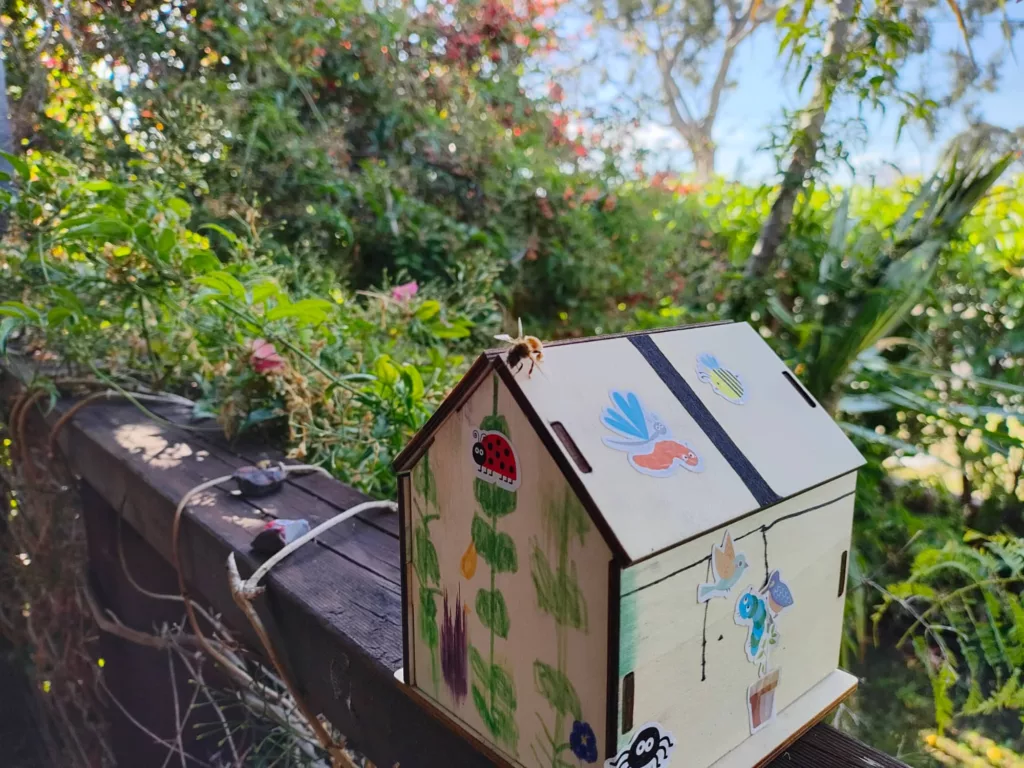


Battery
Battery life sees the Razr 40 in much the same predicament as other 5G phones of today, in that you’ll hit a good day of life, but anything more is likely to be a struggle without a charge.
Testing the Razr 40 over the space of a week, we found the phone typically needed a nightly charge, though could hit a full 24 hours if you used it intermittently, something the cover screen can assist with.

Simply put, because you have a small screen on the outside of the phone, you may find you don’t need to open up the handset to check your message or notifications, or even control your music and switch tracks.
You can do all of this from the small 1.5 inch screen on the top of the handset, and while it’s not quite as flexible as the 3.6 inch inch screen on the Razr 40 Ultra, it can still also be a bit of a life saver. At the very least, it’s an idle time and battery saver, which we suspect is much the point.
Motorola has also made the phone support wireless charging, which means topping the phone up with a flat Qi charger isn’t difficult. Opt for wired USB Type C charging and the phone will charge more quickly, but it’s your choice which you use.

Value
This combination of design and tech meets at a surprisingly economical price, at least for a foldable. Remember, this technology is still technically brand new, having only been out for a few years.
As such, phones with folding screens aren’t normally inexpensive, fetching a minimum of $1399 in the few years they’ve been out.
The Motorola Razr 40 is a little different. While its specs are a little subdued, the phone is essentially similar to the regular “Razr” we saw at the beginning of the year, and yet comes with a saving of $500.

In Australia, the Razr 40 is $999, making it positively inexpensive for a foldable, and indeed one that looks as snazzy as this.
Sure, you’ll technically miss out on some of the whizz bang new features on the 40 Ultra like the big external screen and the faster processor, but you’ll get more or less the same phone otherwise, and save some money in the process.
At $999, the Moto Razr 40 is an instant win for foldable. It was even less expensive during the Black Friday sales, so clearly looking around for a better price makes it an even better proposition.
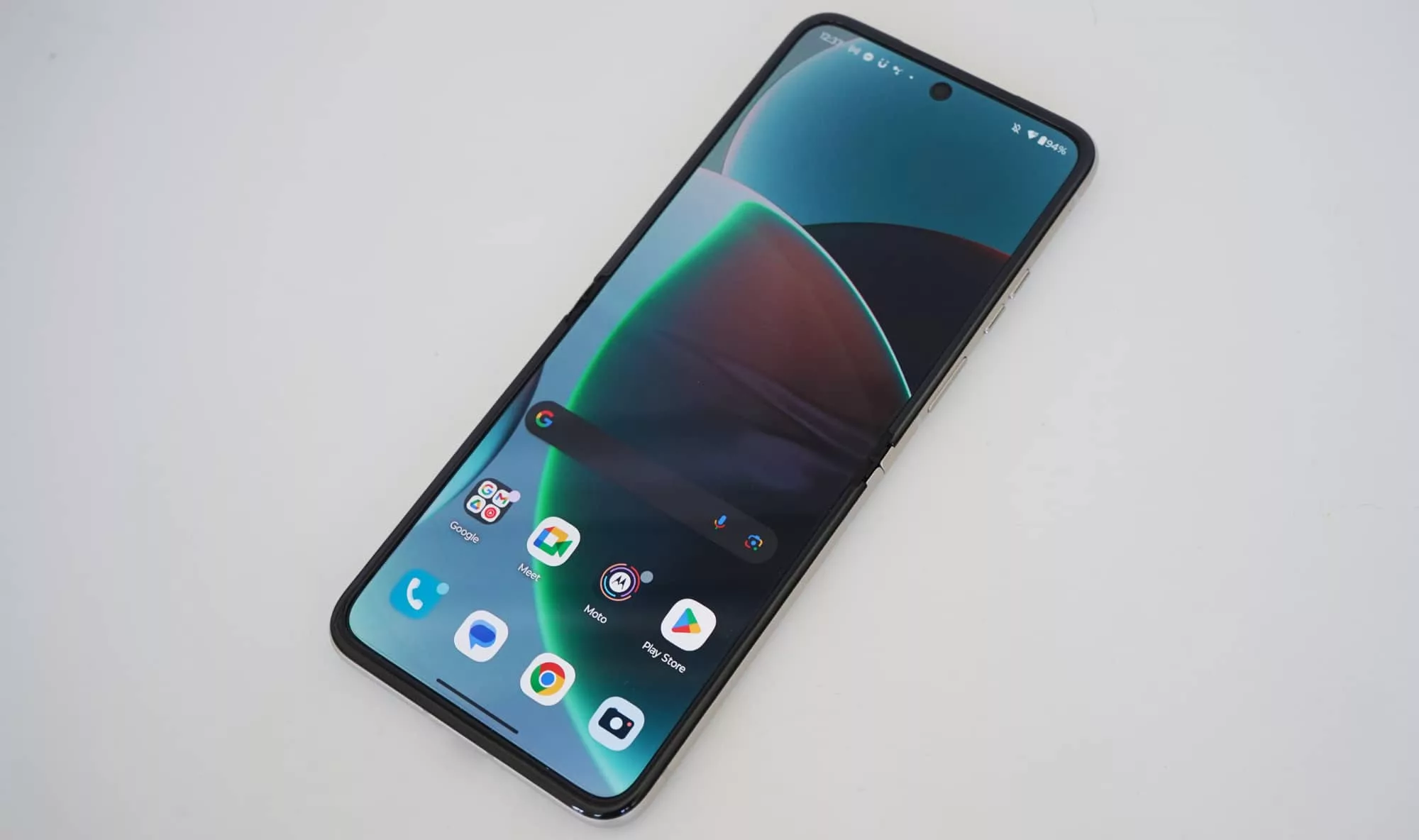
What needs work?
It’s not entirely perfect, though, even though we love what Motorola has set out to do. The aim of this phone is to get the cost of foldable down, and mission accomplished.
But we’d love to see improvements to the system performance, which doesn’t feel as solid as it could. Momentary lag can turn into sizeable moments where it might be better if you just collapse that phone down and get on with your day, whatever it is you’re doing.
Like the first Razr of this year — which is one of three we’ve now checked out in the one year — the screen up front can feel like a bit of a waste, but it does the job. It’s no comparison to the versatile massive screen on the Razr 40 Ultra, though, which just really delivers extra uses.
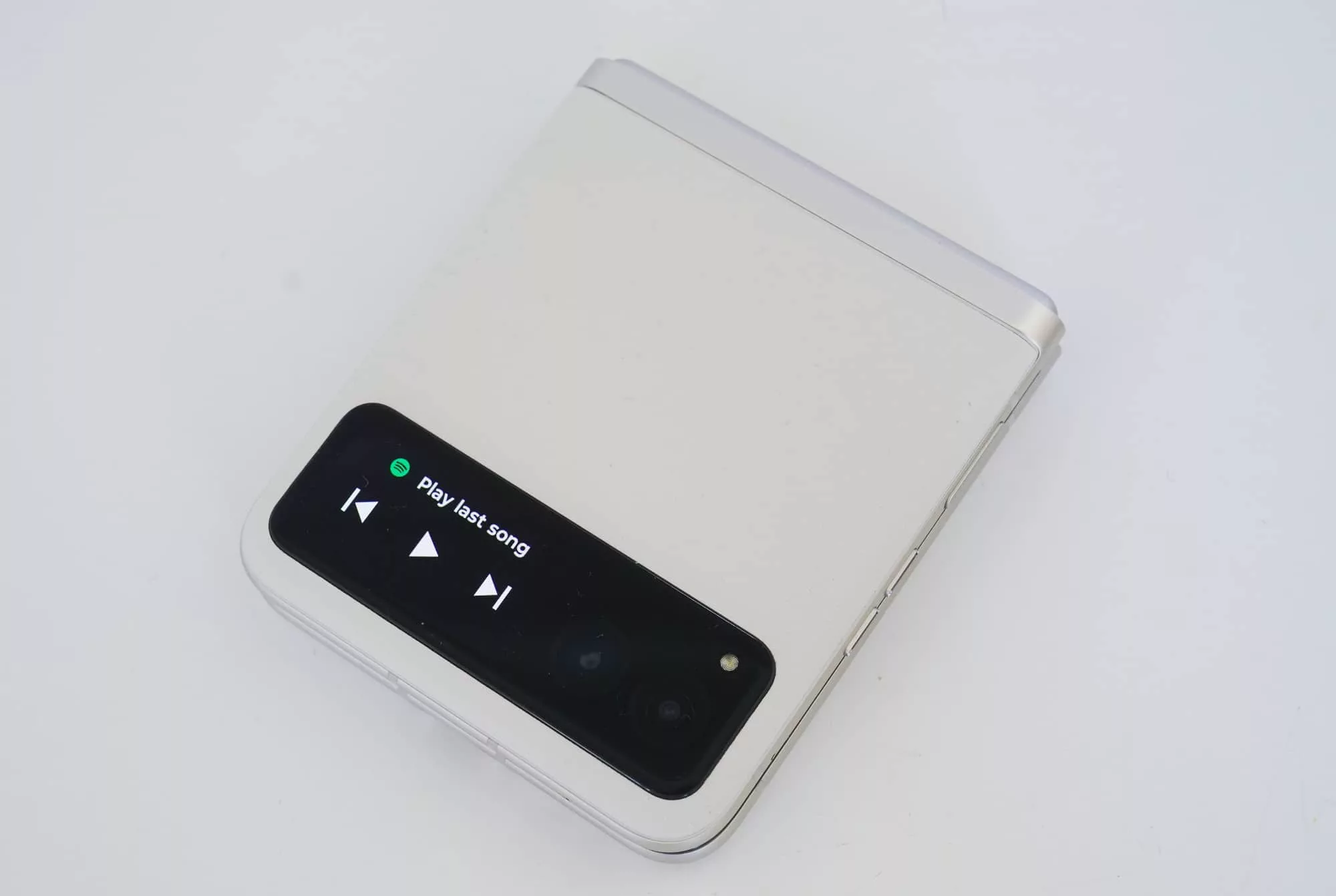
Final thoughts (TLDR)
What makes the Razr 40 genuinely compelling isn’t the small screen on the front, but the price.
Available for just under a grand in Australia, the Razr 40 is the least expensive of any current foldable phone in the country. It really gets the price down in a category that only has a few players.
For the price, this phone is very compelling. It’s not the best foldable in the market, sure, but at this price, the Razr 40 stands out in a positive way.
